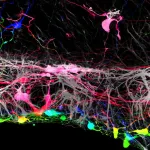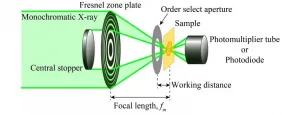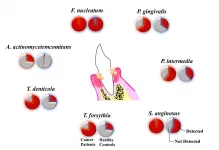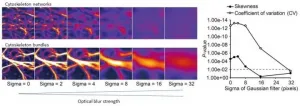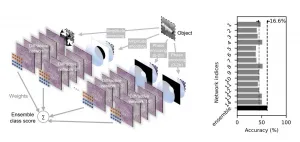(Press-News.org) WASHINGTON -- Women who do not fit female stereotypes are less likely to be seen as victims of sexual harassment, and if they claim they were harassed, they are less likely to be believed, according to research published by the American Psychological Association.
"Sexual harassment is pervasive and causes significant harm, yet far too many women cannot access fairness, justice and legal protection, leaving them susceptible to further victimization and harm within the legal system," said Cheryl Kaiser, PhD, of the University of Washington and a co-author of the study published in the Journal of Personality and Social Psychology. "Our research found that a claim was deemed less credible and sexual harassment was perceived to be less psychologically harmful when it targeted a victim who was less attractive or did not act according to the stereotype of a typical woman."
Sexual harassment is a widespread social problem with a broad range of harmful consequences, including decreased engagement with and performance in work and school, worse mental and physical health, and increased economic instability, according to Kaiser.
"Perceiving sexual harassment involves noticing a behavior that might qualify as harassment and linking that behavior to gender-based group membership," said co-author Bryn Bandt-Law, a doctoral student at the University of Washington. "We wanted to understand what happens when the victim does not look or act like a stereotypical member of that gender-based group."
In Western societies, stereotypical women tend to be perceived as attractive, thin, relatively young and dressing in a feminine way. Stereotypically feminine hobbies include shopping, yoga or watching romantic movies, rather than stereotypically masculine hobbies such as fishing, contact sports or watching violent action movies.
The researchers conducted a series of 11 multi-method experiments, involving more than 4,000 total participants, designed to investigate the effect a victim's fit to the concept of a typical woman had on participants' view of sexual harassment and the consequences of that mental association.
In five of the experiments, participants read scenarios in which women either did or did not experience sexual harassment. Participants then assessed the extent to which these women fit with the idealized image of women, either by drawing what they thought the woman might look like or selecting from a series of photos. Across all the experiments, participants perceived the targets of sexual harassment as more stereotypical than those who did not experience harassment.
In the next four experiments, participants were shown ambiguous sexual harassment scenarios, such as a boss inquiring about a woman's dating life. These scenarios were paired with descriptions or photos of women who were either stereotypical or not. The participants then rated the likelihood that the incident constituted sexual harassment.
"We found that participants were less likely to label these ambiguous scenarios as sexual harassment when the targets were non-stereotypical women compared with stereotypical women, despite the fact that both stereotypical and non-stereotypical targets experienced the same incident," said Jin Goh, PhD, of Colby College and another author of the study.
The final two experiments found that sexual harassment claims were viewed as less credible and the harassment less likely to be recognized as psychologically harmful when the accuser adhered less to the female stereotype, even though the claims were identical.
"Our findings demonstrate that non-stereotypical women who are sexually harassed may be vulnerable to unjust and discriminatory treatment when they seek legal recourse," said Bandt-Law. "If women's nonconformity to feminine stereotypes biases perceptions of their credibility and harm caused by harassment, as our results suggest, it could prevent non-stereotypical women who are sexually harassed from receiving the civil rights protections afforded to them by law."
INFORMATION:
Article: "Narrow Prototypes and Neglected Victims: Understanding Perceptions of Sexual Harassment," by Jin Goh, PhD, Colby College: Bryn Bandt-Law, BA, and Cheryl Kaiser, PhD, University of Washington; and Nathan Cheek, MA, and Stacey Sinclair, PhD, Princeton University. Journal of Personality and Social Psychology, published online Jan. 14, 2021.
Full text of the article is available online at https://www.apa.org/pubs/journals/releases/psp-pspi0000260.pdf.
Contact:
Cheryl Kaiser, PhD, can be reached by email.
In experiments in mouse tissues and human cells, Johns Hopkins Medicine researchers say they have found that removing a membrane that lines the back of the eye may improve the success rate for regrowing nerve cells damaged by blinding diseases. The findings are specifically aimed at discovering new ways to reverse vision loss caused by glaucoma and other diseases that affect the optic nerve, the information highway from the eye to the brain.
"The idea of restoring vision to someone who has lost it from optic nerve disease has been considered science fiction for decades. ...
DALLAS - Jan. 13, 2021 - A new treatment that combines two existing medications may provide long-sought relief for many battling debilitating methamphetamine use disorder, according to a study to be published tomorrow in The New England Journal of Medicine.
The article, based on a multisite study funded by the National Institutes of Health (NIH), describes how combining an injectable drug currently used to treat alcohol and opioid addictions (naltrexone), and a commonly prescribed antidepressant (bupropion) produced positive results in 13.6 percent of the 403 patients treated, significantly higher than the 2.5 percent response in placebo ...
Lithium-ion batteries (LIB) are widely used for daily products in our life, such as hybrid cars, cell phone, etc. but their charge/discharge process is not fully understood yet. To understand the process, behaviors of lithium ion, distribution and chemical composition and state, should be revealed. A research group in Institute for Molecular Science noticed on a scanning transmission X-ray microscope (STXM, shown in Fig. 1) as a powerful technique to perform X-ray absorption spectroscopy (XAS) with high spatial resolution. By using absorption edge of a specific ...
Researchers led by Tokyo Medical and Dental University (TMDU) find that certain oral pathogens are more prevalent in esophageal cancer patients, and could be used as a novel diagnostic tool
Tokyo, Japan - It is increasingly clear that the trillions of bacteria that make themselves at home in and on the human body are more than just casual observers along for the ride. Gut bacteria in particular have been shown to have an enormous influence on human health, with studies suggesting they play a role in illnesses ranging from autoimmune disorders to anxiety and depression.
The oral cavity is another rich source of microbial diversity, ...
A research group from Kumamoto University, Japan has developed a highly sensitive technique to quantitatively evaluate the extent of cytoskeleton bundling from microscopic images. Until now, analysis of cytoskeleton organization was generally made by manually checking microscopic images. The new method uses microscopic image analysis techniques to automatically measure cytoskeleton organization. The researchers expect it to dramatically improve our understanding of various cellular phenomena related to cytoskeleton bundling.
The cytoskeleton is a ...
Data from the DESI (Dark Energy Spectroscopic Instrument) Legacy Imaging Surveys have revealed over 1200 new gravitational lenses, approximately doubling the number of known lenses. Discovered using machine learning trained on real data, these warped and stretched images of distant galaxies provide astronomers with a flood of new targets with which to measure fundamental properties of the Universe such as the Hubble constant, which describes the expanding Universe.
Astronomers hunting for gravitational lenses utilized machine learning to inspect the vast dataset known as the DESI Legacy Imaging Surveys, uncovering 1210 new lenses. The data were collected at Cerro Tololo Inter-American Observatory (CTIO) and Kitt Peak National Observatory (KPNO), ...
URBANA, Ill. ¬- Illinois residents value efforts to reduce watershed pollution, and they are willing to pay for environmental improvements, according to a new study from agricultural economists at the University of Illinois.
Nutrient runoff from agricultural production is a major cause of pollution in the Mississippi River Basin and contributes to hypoxia - limited oxygen to support sea life in the Gulf of Mexico. The U.S. Environmental Protection Agency (EPA) set up action plans to reduce pollution in 12 midwestern states and reduce transmissions of nitrate-nitrogen and phosphorus by 45% in 2040.
Illinois agencies have established the Illinois Nutrient Loss Reduction Strategy (INLRS) to ...
Recently there has been a reemergence of interest in optical computing platforms for artificial intelligence-related applications. Optics/photonics is ideally suited for realizing neural network models because of the high speed, large bandwidth and high interconnectivity of optical information processing. Introduced by UCLA researchers, Diffractive Deep Neural Networks (D2NNs) constitute such an optical computing framework, comprising successive transmissive and/or reflective diffractive surfaces that can process input information through light-matter interaction. These surfaces are designed using standard deep learning techniques ...
CORVALLIS, Ore. - Researchers at Oregon State University have found that the blue orchard bee, an important native pollinator, produces female offspring at higher rates in the aftermath of wildfire in forests.
The more severe the fire had been, the greater percentage of females - more than 10% greater in the most badly burned areas relative to areas that burned the least severely.
"This is one of the first studies that has looked at how forest fire severity influences bee demography," said Jim Rivers, an animal ecologist with the OSU College of Forestry. "Sex ratio varied under different fire conditions but the number of young produced did not, which indicates bees ...
A first-of-its-kind, international study of 107,000 children finds that higher temperatures are an equal or even greater contributor to child malnutrition and low quality diets than the traditional culprits of poverty, inadequate sanitation, and poor education.
The 19-nation study is the largest investigation of the relationship between our changing climate and children's diet diversity to date. It is believed to be the first study across multiple nations and continents of how both higher temperatures and rainfall--two key results of climate change--have impacted children's diet diversity.
"Certainly, future climate changes have been predicted to affect malnutrition, but it surprised ...
